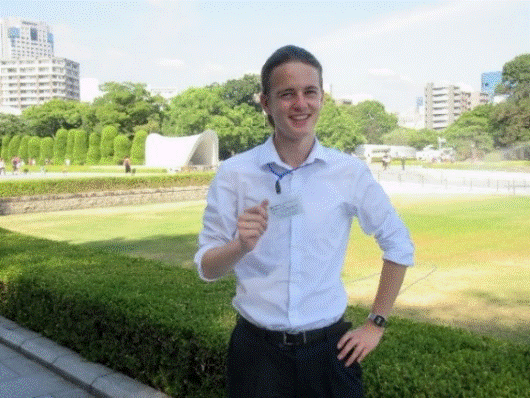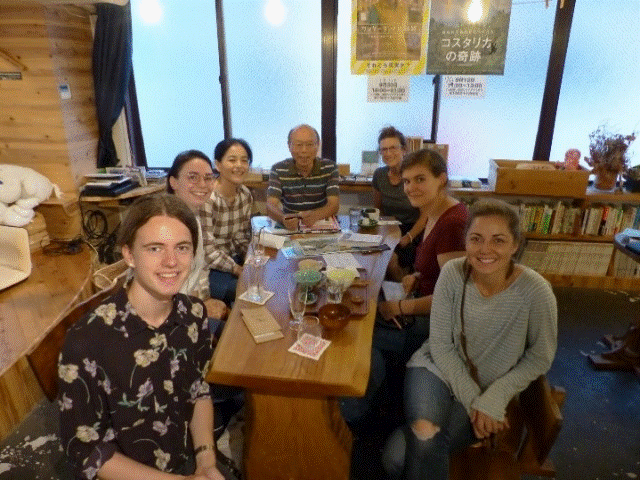 Community Connections
- November 2018
Community Connections
- November 2018
Community Connections is a column written by a Hiroshima City CIR, in which ways of making connections with people or local communities are introduced.
What is a C.I.R. (Coordinator for International Relations)?
A Coordinator for International Relations, or CIR for short, is a participant on the JET Programme who assists local government offices in international exchange at the local level.
Meeting hibakusha: learning about the A-bombing from its survivors
By Mark McPhillips

Hajimemashite! I’m Mark, the new CIR (Coordinator for International Relations) here at the Peace Culture Foundation. As well as being available in the International Conference Center for a chat, I’ll be writing this quarterly column, which is all about ways to get ‘connected’ here in Hiroshima. Yoroshiku onegaishimasu!

Before coming to Hiroshima, an atomic bomb had never felt like something real or personal to me; a photograph of a mushroom cloud taken from afar. However, in various ways Hiroshima has already opened my eyes to the world under that cloud. The Peace Memorial Museum displays chilling photographs and heartbreaking videos of survivor testimonies, and these are made more real by walking the same streets on which the victims walked. However, what has given me even more understanding than exhibitions and photographs has been the opportunity to meet with those who lived through it all.
The A-Bomb survivors, or hibakusha (literally ‘bombed person’), numbered just under 155,000 in March this year. Among these, a small proportion are ‘storytellers’ (kataribe), who volunteer their time to give their testimonies about the bombings. As the years wear on and more and more hibakusha are no longer with us, a new generation of volunteers called ‘successors’ (denshousha) has stepped up to learn and preserve their stories for the future.

In the last few months I have already had the honor of speaking to multiple hibakusha, and I have found that meeting survivors in the flesh changes how one learns about the bombing in many ways. For one, hearing the ways in which individuals and their families were affected truly bring the horrors of the bombing home. Also, a dialogue with a human being is more interactive than an inanimate museum piece. For example, my American friends had a chance to ask questions about feelings towards their country. The hibakusha themselves were also curious, and asked us questions about our lives here in Hiroshima. We even touched on profound topics like world history and politics. It was a rare opportunity for exchange.
You can listen to talks by successors every day, in both English and Japanese, at the Peace Memorial Museum. There are sit-down chats with hibakusha and successors at Hachidori-sha Café on the 6th (in English) and on the 16th and 26th (with a Japanese-English interpreter) of every month.

 [pdf,133KB,1page]
[pdf,133KB,1page]